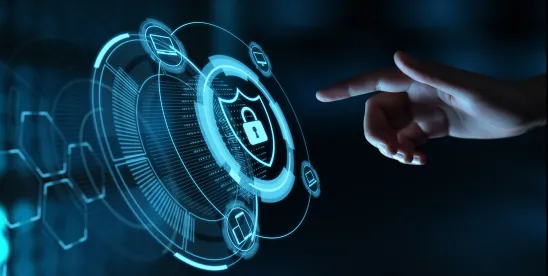In a land before time (technologically speaking . . . so, like, the mid-nineties), the most basic software encryption functions were controlled under the U.S. International Traffic in Arms Regulations. The then-current version of Netscape or Lotus Notes (the hot tech of the era) were controlled under the same regulatory regime as missiles and fighter jets. Then, in 1996, an executive order moved encryption to commercial export controls and freed up the software industry to flourish into its current, omnipresent state.
This week, the U.S. government rolled out similarly overdue rules for the commercial space industry. The changes will reduce the restrictions that treat commercial space and satellite commodities, technology, and software as if they were military assets, and will lower the barriers to the commercial space industry’s potential to collaborate across borders.
We are presenting and discussing those rules in a four-part series of blog articles, the second of which we present here. The summary in Section 1 is the same as our other articles, but the rest delves into an Export Administration Regulations rule proposing relaxation of controls on space and satellite parts and components exports to dozens of countries, among other changes.
1. The October 2024 Space Rules
On October 17, 2024, U.S. agencies overseeing exports in the space industry[1] issued four new regulatory notices, each of which should reduce compliance burdens and potential confusion that space and satellite companies have faced in the past (the October 2024 Space Rules). All of the regulations appear to be aimed at modernizing U.S. export regulations and keeping the U.S. commercial space industry competitive globally, as follows:
- A rule removing or exempting items from defense export controls, including, among others:
- Decontrolling spacecraft that can dock with commercial space stations, as well as spacecraft with autonomous collision avoidance
- Providing limited exemptions to items for certain space agency programs, space tourism, and space fundamental research
- A rule, which is the subject of this blog post, reducing and clarifying commercial controls on certain items, including, among others:
- Reducing controls on Export Control Classification Number (ECCN) 9A515.x, a catch-all for space-related parts, components, and accessories
- Clarifying rules on spacecraft and launch vehicle export controls
- Clarifying controls on vehicles launched in international waters
- A rule eliminating the export license requirements for certain spacecraft to Australia, Canada, and the United Kingdom.
- A rule adding a new export License Exception for Commercial Space Activities (CSA).
We welcome you to read each rule through the links provided above. However, for those of you who can stand to wait (and who don’t mind our prose), we will provide summaries of each new rule throughout the week.
Below, please find our overview of the second October 2024 Space Rule, wherein BIS eases license requirements for less sensitive items and clarifies a few of the existing controls. This interim final rule (IFR) is immediately effective yesterday but allows the public to provide comments on the rule so that it may be adjusted later on.
2. Reducing License Requirements for ECCN 9A515.x[2]
Before the IFR, space and satellite parts and components required a license or license exception to nearly all countries (except the UK, Australia and Canada) under ECCN 9A515.x. Now, however, those items have largely been changed from controls at the National Security column 1 (NS1) and Regional Security column 1 (RS1) level to the NS2 and RS2 level.
That is not a complete removal of the controls, but it does allow space parts and components to be exported to most EU and NATO countries, as well as South Korea, New Zealand, Japan, Argentina, Mexico, and Turkey, among others.
Broadly, this makes the export of space-related parts and components, as well as the related technology easier for companies to move among countries that are U.S. allies and partners. Because the relaxation of the controls was so broad, BIS may pick out a few parts, components, accessories, and attachments in the future that still merit higher controls and will toss them into a new ECCN 9A515.w, which remains subject to NS1 and RS1 controls.
BIS also identified and downgraded what could be .x items from 9A004 and 9A515 to the .y subparagraphs. Items classified under 9A004.y or 9A515.y are controlled for RS reasons only if they are destined to China, Russia, or Venezuela. BIS has emptied out the catch-all bucket, holding on to a few pieces that still warrant control, and let the rest move into a much freer flow of commerce.
3. Clarifying the Interplay Between ECCNs 9A004, 9A515, and USML Category IV
The ECCN 9×515 was part of a “500 series” of export control categories introduced about ten years ago during the Export Control Reform (ECR).[3] The category was useful for bringing certain commercial space and satellite items out of the ITAR (a big part of the ECR). However, parts of 9×515 sat awkwardly—seeming to duplicate pieces of the existing ECCN 9×004 and not quite fully pulling other pieces out from the control of USML Category IV of the ITAR.
Now, BIS has clarified (somewhat) the interplay between ECCNs 9A004, 9A515, and USML Category IV by revising the license requirement note found in 9A004. Essentially, any commodity described under 9A004.g, .h, .r, .s, and .u through .y will remain under the control of 9A004. However, any commodity described under 9A004.b through .f, and .h is controlled under 9A515. Finally, space launch vehicles described under 9A004.a are controlled under USML Category IV.
So, if the items are controlled elsewhere, why keep all these items listed in 9A004, you might ask. Well, we’re glad to learn that you are so inquisitive (as it really helps our narrative progression). The reason for the duplicative entries is that continuing to list items in 9A004, even though they are actually controlled elsewhere, maintains the Commerce Control List’s alignment with the Wassenaar Arrangement Dual-Use List.
4. New ECCN Subparagraphs and Items
The IFR also added several new ECCN subparagraphs which we summarize below.
| New ECCN subparagraphs | Description |
| 9A004.r | In-space habitats, other than the International Space Station |
| 9A004.s | Certain parts, components, accessories, and attachments for in-space habitats |
| 9A515.b.2 | Terrestrial equipment specially designed for spacecraft for certain data processing functions |
| 9A515.b.3 | Simulators specially designed for verification of operational procedures of spacecraft |
| 9A515.w | Reserved paragraph for parts, components, accessories, and attachments that would have otherwise been classified under 9A515.x but warrant a more restrictive NS1 and RS1 license requirement |
| 9A604.y.1 | Parts and minor components for landing leg assemblies |
| 9D515.x | Software specifically designed for the development, production, operation, failure analysis, or anomaly resolution of commodities controlled by ECCN 9A515.x |
| 9E515.x | Technology required for the development, production, operation, failure analysis, or anomaly resolution of commodities controlled by ECCN 9A515.x |
| Removed ECCN subparagraphs | Description |
| 9A604.a and .b | Thermal batteries previously described under 9A604.a and .b are controlled under the ITAR |
The IFR makes clear that BIS is thinking about the future and starting to design controls for the anticipated commercial space stations.
BIS also added numerous items in 9A004.y and 9A515.y that we welcome our readers to review. These items have been identified in an interagency-cleared commodity classification as warranting less stringent controls and moving favorably towards export activities.
5. Clarifying the Scope of License Exception GOV[4]
BIS clarified and expanded the scope of License Exception GOV. The agency noted that License Exception GOV can apply to Space Act Agreements to which the National Aeronautics and Space Administration (NASA) is a party under 15 CFR 740.11(b)(2)(ii) and (b)(2)(iii)(B) and (C). Further, License Exception GOV for the International Space Station (ISS) may overcome certain license requirements in the EAR Russian and Belarus sanctions for ECCN 9A004. BIS noted that exports, reexports, or in-country transfers of ECCN 9A004 commodities to Russia for ISS launches on short notice are consistent with U.S. national security and foreign policy interests provided they do not fall under the general restrictions on all license exceptions (15 CFR 740.2) and meet all criteria of License Exception GOV for the ISS.
6. Shipments to Launch Platforms Located in International Waters
Finally, BIS clarified that a shipment or transmission of items to a launch platform or facility in international waters is treated as an export or reexport to the country or countries the platform of facility is owned by, controlled by, or being operated on behalf of.
It provides welcome guidance for companies and individuals involved in the space industry, easing compliance with export control regulations when sending items out into the open sea for launch.
However, we wonder whether the provision would also cover in-air launches from planes in international airspace!
7. Status of the Rules
DDTC’s proposed rule largely revises the ITAR USML Categories IV and XV and was published in the Federal Register on October 23, 2024. Comments for the proposed rule must be received by DDTC no later than Friday, November 22, 2024.
BIS published revisions and additions to its space-related export controls which are detailed in a an IFR, a final rule, and a proposed rule. The IFR and final rule are effective October 23, 2024. Comments for the IFR and proposed rule must be received by BIS no later than Friday, November 22, 2024.
8. More to Follow
This is the second of four blogs with two more following next week.
We continue to monitor these developments and expect to see additional tweaks and guidance in the future. We will, of course, keep our readers updated.
We welcome your questions and comments at the contact information of the authors.
FOOTNOTES
[1] The U.S. Department of State Directorate of Defense Trade Controls (DDTC) which promulgates and enforces the International Traffic in Arms Regulations (ITAR), and the U.S. Department of Commerce Bureau of Industry and Security (BIS) which promulgates and enforces the Export Administration Regulations (EAR).
[2] BIS also reduced the controls for ECCNs 9A004.v and 9A004.x from NS1 and RS1 to NS2 and RS2. For purposes of this section, we focus on 9A515.x.
[3] A heady time for this then-mid-level associate blogging his way through an eleven-part series with titles like “Livin’ in a Materials World” and “A Regulatory Sea (and Land) Change ”, as well as one that was just a bunch of Douglas Adams quotes.
[4] Governments, international organizations, international inspections under the Chemical Weapons Convention, and the International Space Station (GOV).





 />i
/>i

